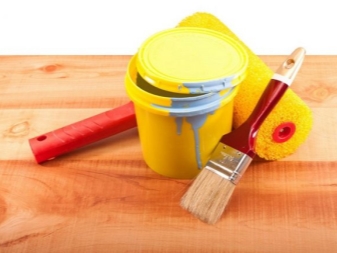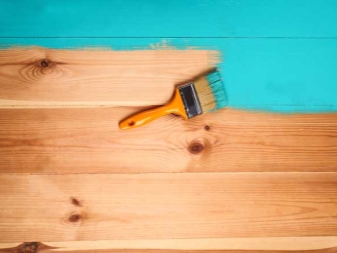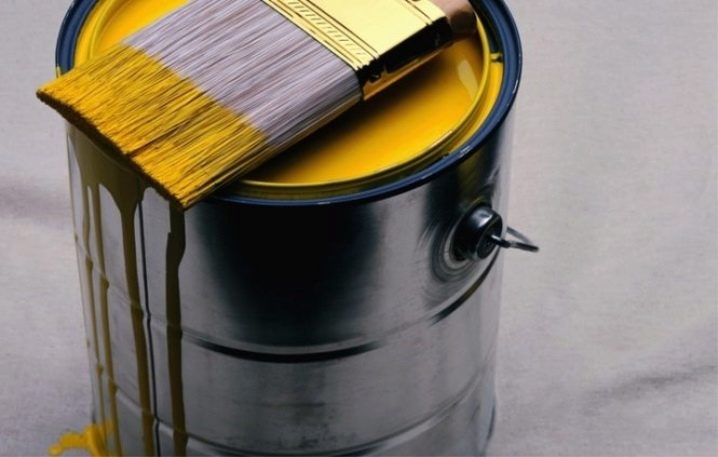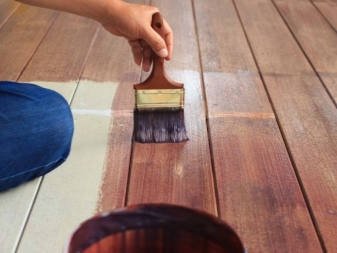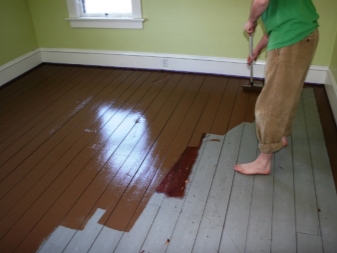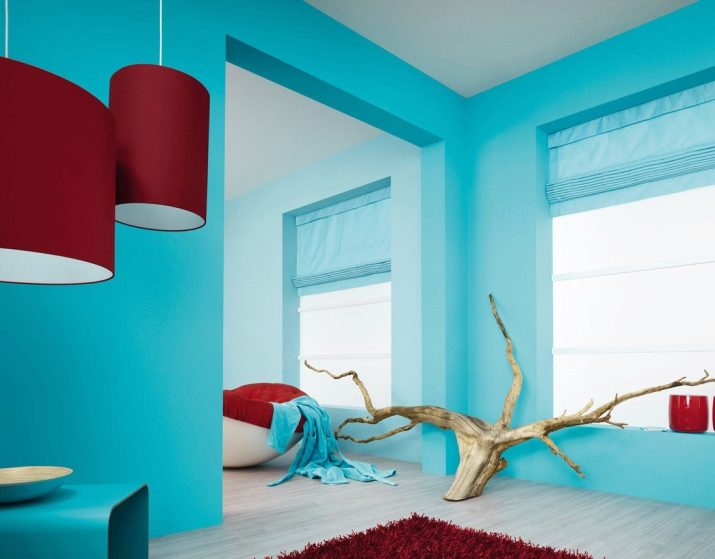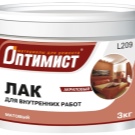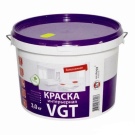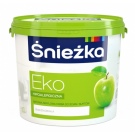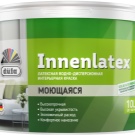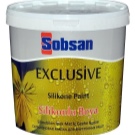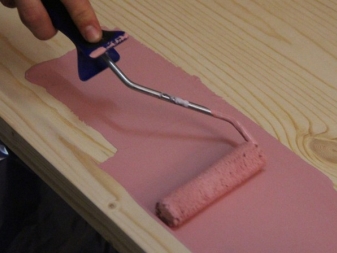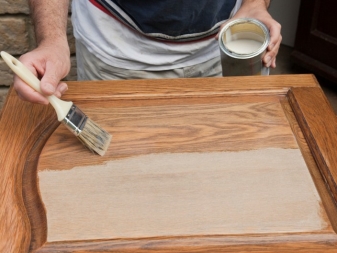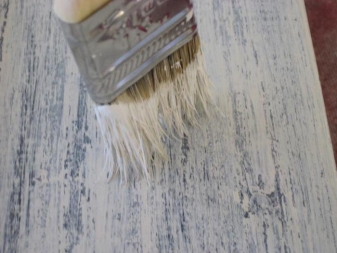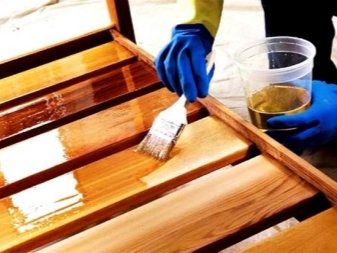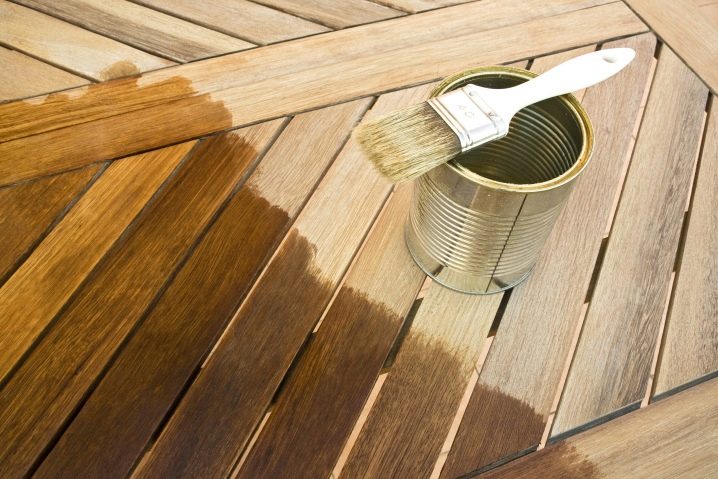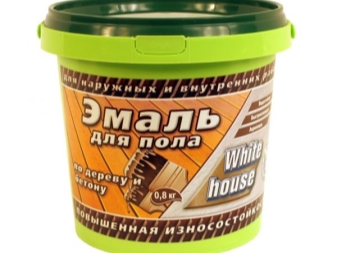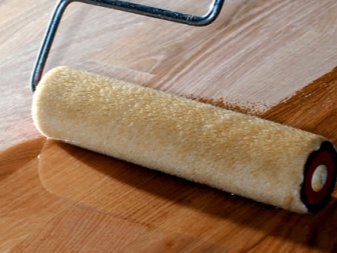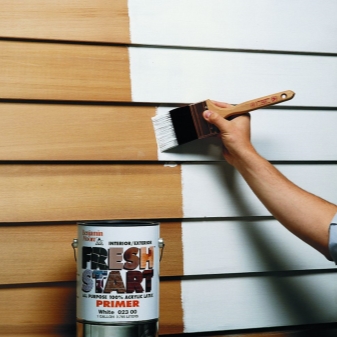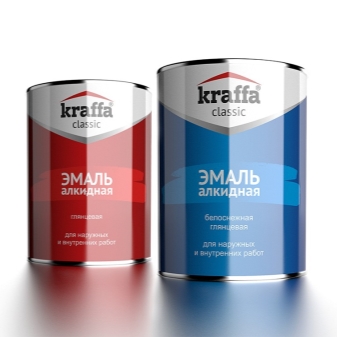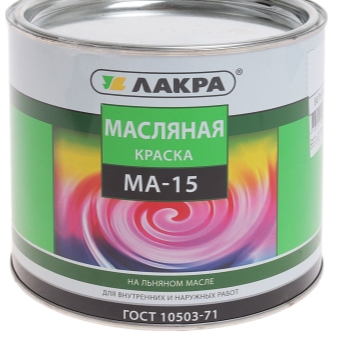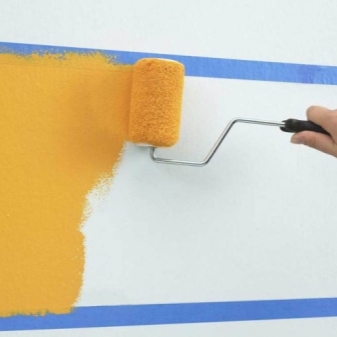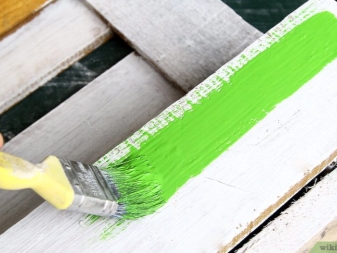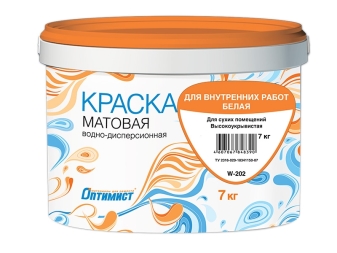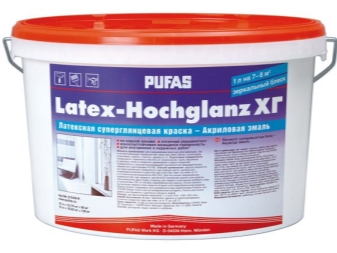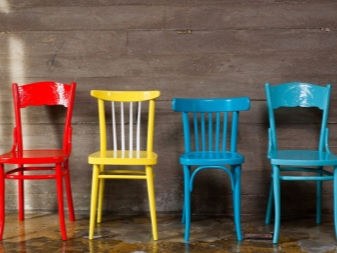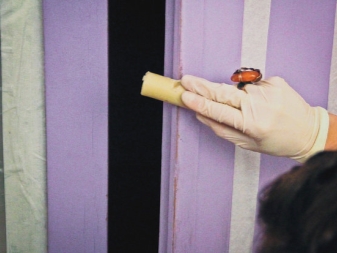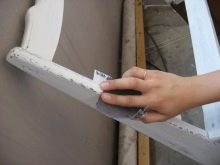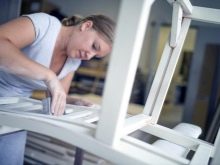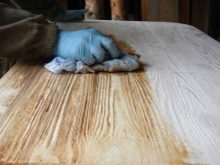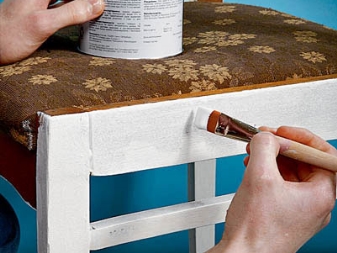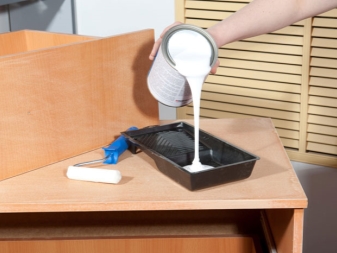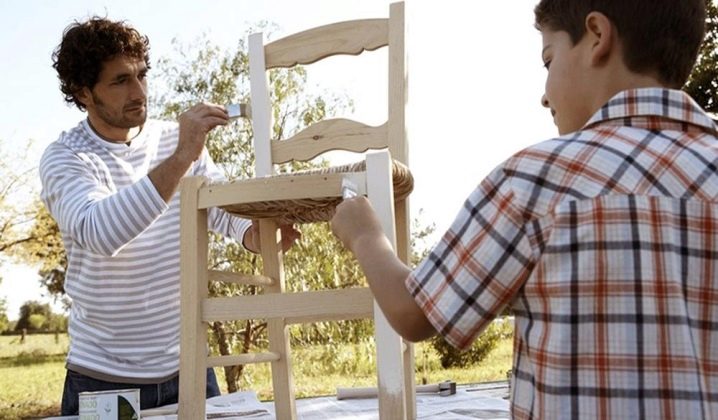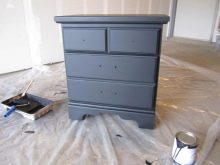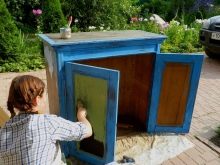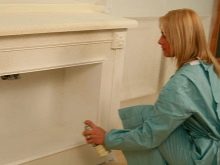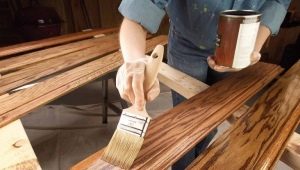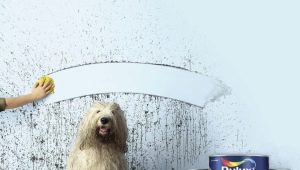How to choose an odorless paint for interior work?
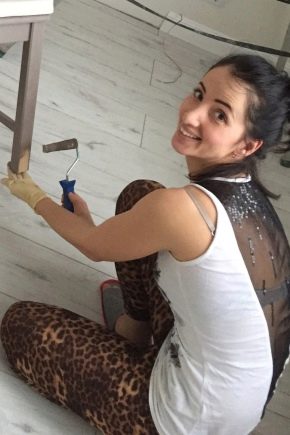
When making repairs in a house or apartment, sooner or later, people are faced with the fact that they have to choose paint for work. At the same time it is necessary to take into account the place where the repair will be carried out. If it is internal work, it means that the material for dyeing should be tried to choose odorless.
Coloring compositions
In order to update the premises from the inside, it is enough to simply paint the individual elements: walls, furniture or floor. However, when choosing a paint for interior work, one should focus on the requirements for the composition of dyes that will be applied to wooden surfaces. This is due to the fact that a person will spend a lot of time in a confined space and his health directly depends on the quality of finishing materials.
Factors you need to pay attention to when choosing a paint for wooden surfaces:
- Where it is planned to operate in the future, wood furniture. From this directly depends on which paint to choose. For example, in the bathroom, the humidity level is quite high, so the paint needs a special one.
- What kind of wood was used to make wooden furniture? For example, massive furniture is made from coniferous wood, and for delicate furniture use deciduous trees.
- Is it planned to re-paint wooden products?
- Will the previous coating (meaning paint) be removed from wooden products that are planned to be painted.
Today there is a huge abundance of varnishes, primers, various coatings on the market of paints and varnishes, which, in the end result, after processing their products will guarantee their long-term and reliable operation.
For a perfect result, staining alone is not enough. Companies that produce a variety of finishing materials and tools have developed and produce primers and primers together with paints. All work must be carried out according to the instructions.where it will be described in stages what and how should be done immediately before the final coating. There are also tables where special materials are indicated which are intended for work with a primer.
Categories
Paints can be divided into several varieties.
Coatings that are visually invisible
These include transparent varnishes, materials for impregnation of materials, protective azure. Due to their composition, and it contains a variety of pigments, it became possible to visually make the wood structure brighter.
Transparent coatings contain substances that create UV protection. Due to the content of such substances, sunlight does not destroy the wood, respectively, the life of wooden products will be increased. Special treatment should be carried out once every two years. It is completely unnecessary to remove all the old coating layers.
In today's world, dispersion acrylic paints have become particularly popular. Such materials contain in their composition acrylates or their derivatives. Instead of a solvent, ordinary water is used here.After the paint is applied to the product, made of wood, it becomes protected from atmospheric influences, as well as burnout. Additionally, the products acquire protection from water, while special impregnation and acrylic paint do not at all prevent the drying out of moisture, as if it were happening in a natural environment.
After the paint is applied to the surface of wood, the thinnest film begins to form. Moisture drying makes the treated product more frost resistant. It is not recommended to store acrylic paints where they may freeze. Otherwise, the paint can not be used in the future.
After paints appeared on the market of paints and varnishes, where water was used as a solvent, the demand for traditional varnishes and enamels significantly decreased. Despite the decline in demand, such products are still used. They prefer to use because of such qualities as simplicity, ease of use, quality coating. The disadvantages of such materials include high susceptibility to flammability and harm to human health.
Alkyd paint
Such paint attracts with its value.Used to paint objects made of wood. The advantages of this coloring composition include high hydrophobicity. After the alkyd paint is applied to a wooden surface, a very thin film is formed on it - about 0.1 mm. In this regard, such protection will not be long.
Alkyd materials do not have high permeability. That is why wooden furniture is well protected from moisture. It is recommended to use alkyd materials for processing furniture for bathrooms, as well as rooms where high humidity is observed. The cost of alkyd paint will be much lower than water-based materials.
In order to prevent bubbles from appearing on the surface to be painted, it is necessary to apply paint exclusively on the dried surface.
Oil paints
Paints that are made on the basis of oil, do not have strong odors. The composition of oil components includes pigmenting substances and drying oils, which here acts as a diluent.
Oil paint materials are both colored and not having a specific color. Used for interior and exterior use.The medium of use of oil paints is wide: they make out various surfaces, process wooden products, plaster, concrete and metal. The disadvantages of oil paints include their long-term drying.
Water dispersion paints
Water in this category of paints acts as a solvent - that is why they are considered the safest for interior work. Water-dispersion paint, which is used to paint the floor, absolutely does not smell, almost always white, dries quickly, waterproof.
It is recommended to purchase such compounds for work inside buildings, in school facilities, in hospitals.
Latex paint
This type of paintwork material does not have a pronounced unpleasant odor, it is not toxic. It can handle any type of surface inside the building: wallpaper, plastered walls or bricks.
Latex compositions are characterized by high strength and wear resistance. The content in the latex paint allows the enamel not to swell after application and not to overdry the product. This type of paintwork material can be used for painting products in bathrooms, as well as in the kitchen.It dries pretty quickly: the first layer takes about half an hour, the second one takes an hour.
The quick-drying coloring basis will be suitable for a nursery. It can be applied both on MDF and parquet.
How to apply paint on furniture?
Initially, it is necessary to perform the preparation of wooden products for painting. To do this, remove all drawers, doors and handles from furniture. You will need a rag, sandpaper with coarse and fine grain, a brush-fleyts (wide and flat).
The next stage is the removal of fats and old varnish from the surfaces to be treated with fine-grained sandpaper.
All parts should be processed exclusively along the fibers from different sides.
If there is a veneer, then you need to try not to disturb the thin layer of this material. To clean the product from dirt, do not use rags - it is better to take a brush for this. For processing hard-to-reach places useful sandpaper with fine grain. Using a brush, you can remove the resulting dust from a wooden product.
Immediately before painting, it is recommended to pre-clean the dirt in the room, which appeared after the preparation of wooden products, - this will avoid the ingress of the smallest motes on the newly painted wooden surface.
Rags need to moisten and squeeze. Then all parts of the products are wetted - this will remove almost all the dust. After that, wait 15 minutes.
For painting, you need to use the primer and the coloring composition with one base. It is imperative that you follow the instructions on the packaging.
Recommendations
The presence of a huge choice in the market of paints and varnishes sometimes makes it difficult to make the right choice in favor of a product. It is recommended to follow the following tips when choosing paint for interior work:
- it is necessary to take into account the durability of the coating - usually, manufacturers write on the packaging approximate time;
- fire safety;
- the level of resistance to damage or abrasion - the so-called mechanical loads;
- how easy and simple it will be to care for the painted surface;
- environmental friendliness of the selected material;
- covering ability.
Even at the stage of the paint selection, it is imperative to pay attention to the composition of the dye, and not to the characteristics indicated by the manufacturer.
Many materials are endowed with special pigments that paint the composition in a specific color, binders, acting as a base and forming a film on the surface, as well as various additives.
It is also necessary to pay attention to how the room is used:
- availability of heating;
- room humidity;
- used surfaces;
- probability of fire: in the kitchen, for example, there is a greater likelihood of fire than in the bathroom;
- the presence in the room of the old coating.
See the video below for an overview of interior paints.
